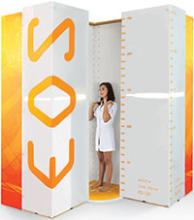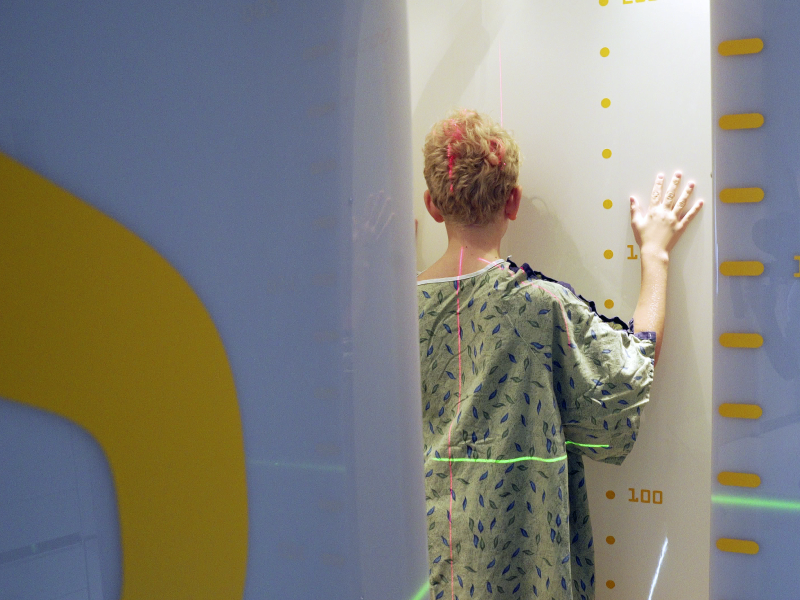Provides low-dose, full-body scans for children with spine, hip and leg disorders

Our EOS Imaging System is a low-dose, 3D, full-body imaging system that scans your child while they are standing. EOS scans are very informative, showing your child’s natural, weight-bearing posture. Scans also show interactions between joints and the musculoskeletal system as a whole, including the spine, hips and legs.
The EOS is a game-changer in caring for children with abnormalities in their spine, hips, legs and knees. The 3D output is intricate and high quality, allowing us to see the entire spine in one image and negating the need to stitch together multiple scans. Ultimately, this improves our ability to make diagnoses and design the best course of treatment.
Reduced radiation
Levels of radiation from medical imaging have increased over the last two decades. Kids are particularly susceptible to the adverse effects of radiation. Compared to general radiography X-rays, EOS uses a significantly lower dose of radiation that still provides extremely detailed, high-quality images. Specifically, these scans deliver radiation doses two to three times less than a general computed X-ray, and 20 times less than a basic computed tomography (CT) scan.
Radiation exposure is a major consideration in our work with children. We are constantly working to minimize exposure in our patients, and EOS is a groundbreaking tool for kids with orthopedic deformities who must be imaged frequently to monitor disease progression.
Improved imaging leads to better care
3D weight-bearing images of kids in an upright, standing position create more accurate views of the spine and lower limbs. They help our physicians better evaluate balance and posture as well as analyze bones, joints and ligaments from many different angles. These single, seamless EOS images help us make more informed diagnoses and develop customized care plans for kids with musculoskeletal disorders.

How EOS Works
Your child will stand in the EOS booth for no longer than 20 seconds while the X-ray is taken. Since the radiation dose is so low, your child won’t even need a protective lead apron! Beams of light run up and down each side of the booth as the X-ray captures your child’s body image. In seconds, the EOS exam produces two simultaneous frontal and lateral images of the whole body or a segment. We can now complete an exam in under four minutes, even for complex spine or full-body views.
EOS referrals & exams
EOS imaging is primarily used to assess patients with spine, hip and leg disorders. In particular, it is an excellent option for kids with progressive conditions such as scoliosis and other spinal deformities that require frequent imaging to monitor care progression.
EOS is not typically used for injuries or conditions that can be evaluated with general radiography, such as broken bones in the arms, legs, hands or feet. Traditional X-rays are still considered the standard for diagnosis of these types of injuries.
Typically, exams will be scheduled by your child’s physician. If the physician determines EOS imaging is appropriate for your child’s condition, the physician will make a referral in order to proceed with an EOS exam.
Ask your physician if an EOS full-body X-ray is right for you.
